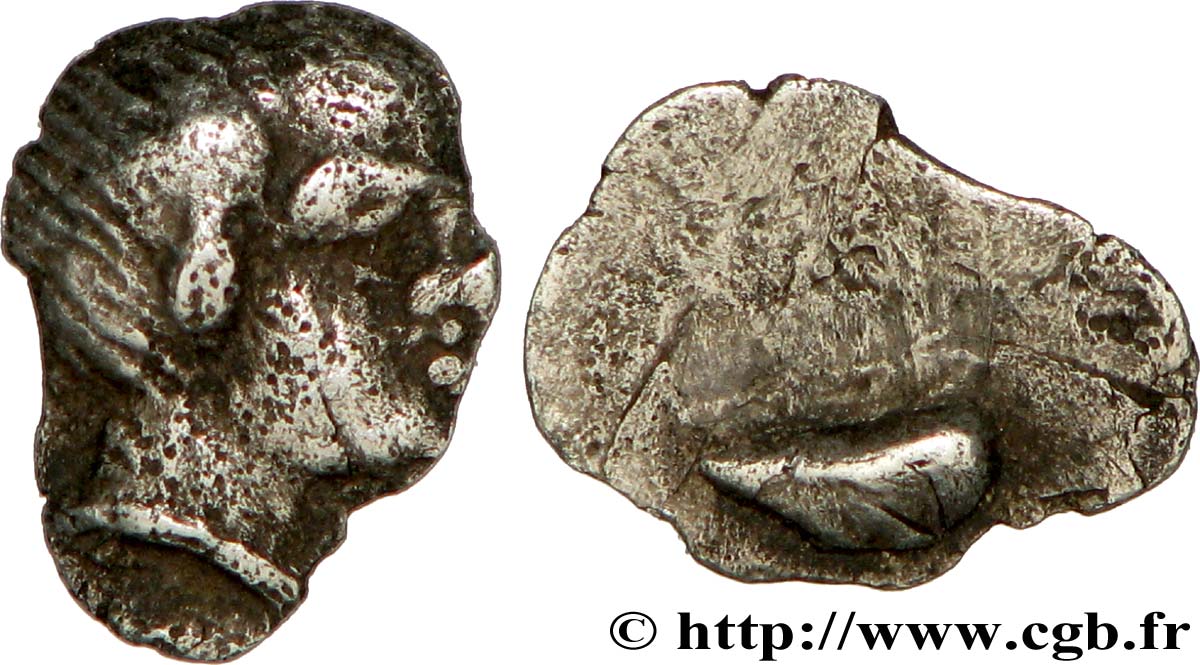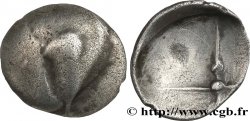Лицевая сторона
Аверс: легенда: ANÉPIGRAPHE.
Аверс: описание: Tête masculine à droite.
Обратная сторона
Реверс: легенда: ANÉPIGRAPHE.
Реверс: Описание: Une sorte du virgule.
Комментарий
Историческая справка
SALUVII
(2nd - 1st century BC)
The Salyens controlled the Marseille region when the Phocaeans founded the city of Massalia in 600 BC.. -VS. Of Celtic-Ligurian origin, divided into a multitude of semi-independent tribes, the Salyens opposed the development of the Marseille city in the hinterland. From the second century BC, the Massaliotes required the help of their ally, Rome, to fight against the Salyens and defend themselves.. This request allowed the Romans for the first time to intervene in Transalpine Gaul in 154 BC.. -VS. in order to help the Marseillais to defend their counters of Antibes and Nice. Subsequently, the Romans from 125 waged a rapid war against the Salyens in order to prevent them from helping the Celto-Ligurian tribes of the Transalpine. They seized Entremont (Bouches-du-Rhône) in 124 BC. -VS. and destroyed it to rebuild it three kilometers away, thus founding the colony of Aquae Sextiae (Aix-en-Provence). Today, it is believed that the site was definitively abandoned during the invasion of the Cimbri and the Teutons at the end of the first century BC.. This invasion was perhaps the last occasion for the Salyens to revolt, at a date between 110 and 90 BC.. -VS. The final revolt of the Salyens occurred during Caesar's proconsulate in Gaul. Sources: Caesar (BC. I, 35, 4); Livy (HR. V, 34 and XXXV, 2); Strabo (G. IV, 178, 203); Ptolemy (G. II, 10, 8). Kruta Celts (22, 40, 187, 308, 338, 600-601, 806).










 Cообщить об ошибке
Cообщить об ошибке Распечатать страницу
Распечатать страницу Отправить мой выбор
Отправить мой выбор Задать вопрос
Задать вопрос Consign / sell
Consign / sell
 Информация
Информация



